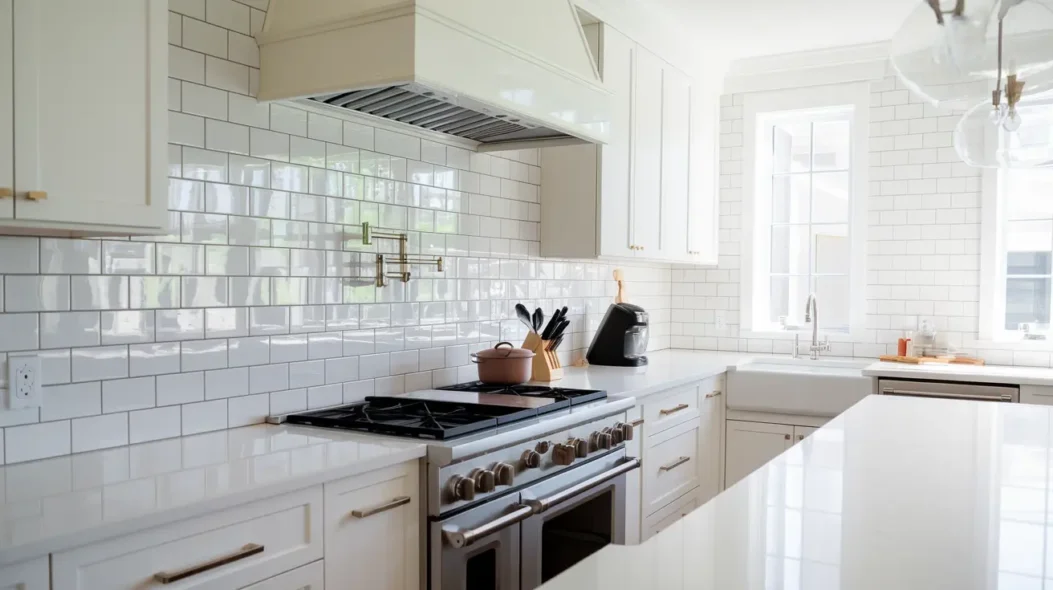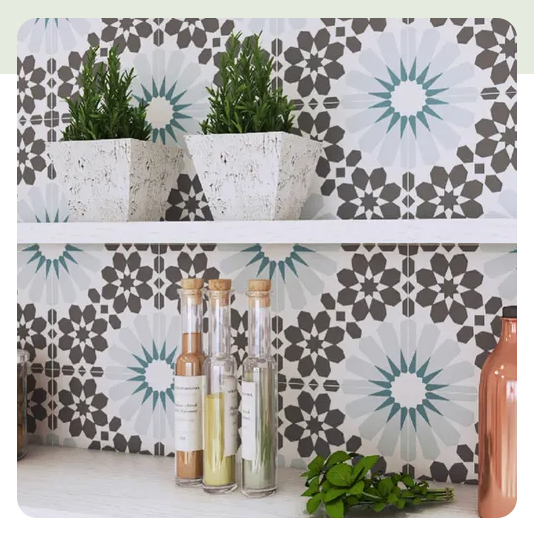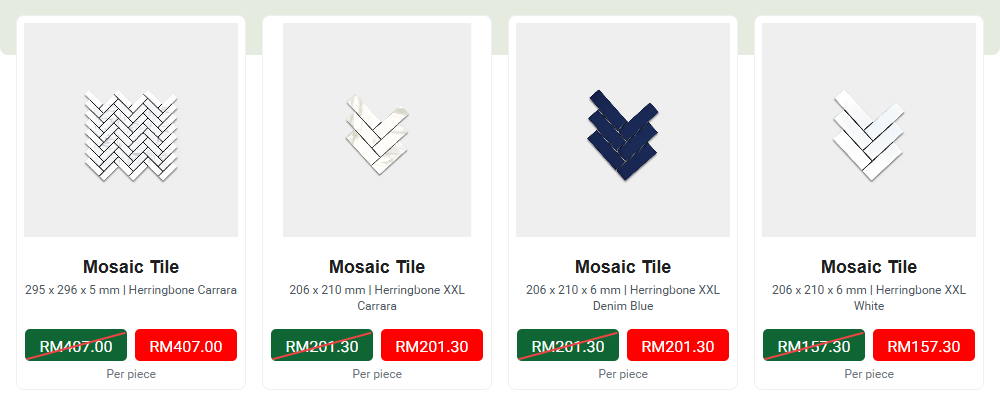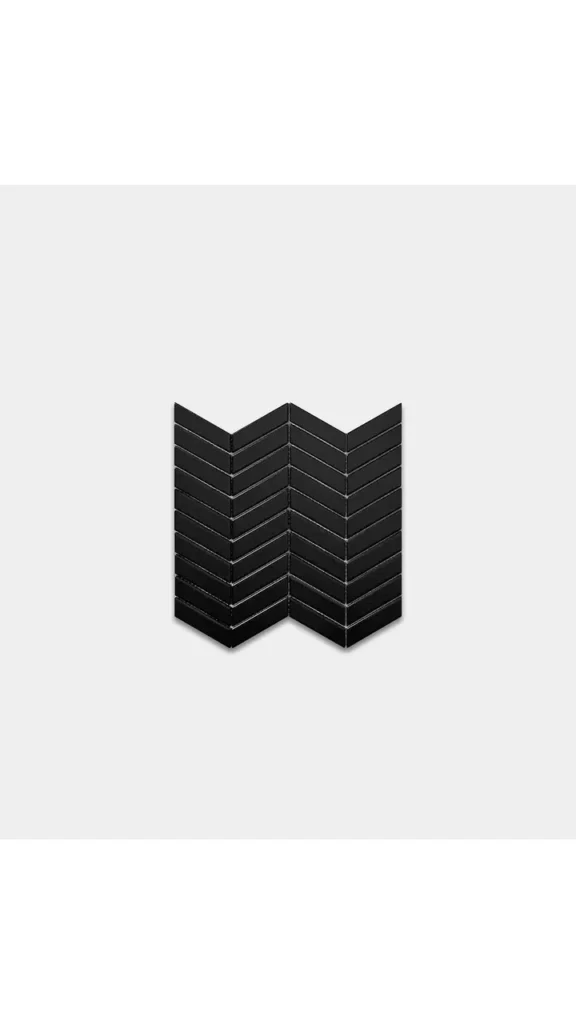What is your go-to material when it comes to your kitchen backsplashes? If you’ve done your research, you’ve likely encountered countless design ideas featuring subway tiles.
Renowned for their classic, timeless appeal, subway tiles offer a clean, simple aesthetic that complements almost any interior style. They effortlessly blend with a scandinavian design scheme, lending a sense of airy simplicity to your space.
In this post, we’ll share insightful tips for designing your kitchen with subway tiles and sprinkle in some creative ideas to help you envision a kitchen makeover that’s both functional and stylish.
First, let’s explore how subway tiles can seamlessly enhance your kitchen.
Use Subway Tiles as Your Kitchen Backsplash
A backsplash serves as a protective shield on the wall between your countertop and upper cabinets. Its primary functions are to protect the wall behind the sink from water damage and to guard against oil splatters from cooking.
Aside from their practical benefits, a tile backsplash is incredibly easy to clean and maintain. Subway tiles, in particular, fit perfectly into this role, offering a sort of “permanent wall design” that exudes both durability and charm.
Subway Tile Pattern Ideas for Your Kitchen
The distinctive look of subway tiles is largely defined by the patterns you choose. Here are four popular patterns:
Classic Staggered Stack
This pattern arranges tiles in staggered horizontal rows. For a striking visual contrast, pair white subway tiles with colored grout—black grout, for example, not only emphasizes the tile’s geometry but also hides dirty marks, lending your kitchen a modern appeal.
Vertical Stack
For a twist on tradition, try stacking the tiles vertically. This orientation creates a clean, refined look and can even lend the illusion of a more spacious kitchen. Vertically stacking tiles works wonderfully in a minimalist setting, where simplicity and clean lines are key.
Herringbone Pattern
If you’re looking to add visual intrigue, the herringbone pattern might be your ideal choice. Its dynamic, interlocking design introduces texture and depth, transforming an ordinary backsplash into a standout feature.
Keep in mind that this pattern can be more labor-intensive, and your contractor might charge a bit more for the extra effort.
Chevron Pattern
Also known as the “V” pattern, the chevron design resembles the herringbone but features tiles cut at a 45-degree angle that meet point-to-point. Although this design tends to be pricier due to the intricate cuts required, it delivers a high-end, cohesive look that can elevate the entire space.
Which Tile Pattern Should You Choose?
Ultimately, your choice comes down to personal style. Are you drawn to the safe, classic charm of a staggered stack, or do you feel adventurous enough to opt for the sophisticated allure of a herringbone or chevron pattern?
Consider how your choice will harmonize with your overall kitchen design, color scheme, and even the style of your cabinetry.
Ways to Design Your Kitchen with Subway Tiles
Begin by picturing your ideal kitchen layout, including your preferred color palette and theme. Here are a few ideas to spark your creativity:
1– Styling Your Kitchen the Classic Way
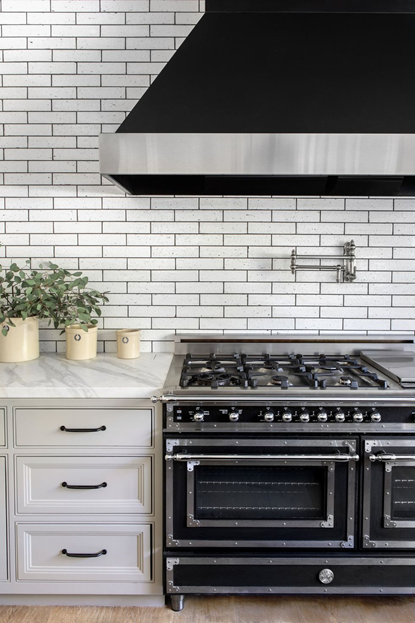
A black-and-white palette never goes out of style. This timeless combination can instantly make your kitchen pop, giving it a sleek, urban edge without overwhelming your space.
2– Extending Subway Tiles to Your Kitchen Walls

Why limit subway tiles to your backsplash? Extend them to accentuate an entire wall, and blend them with the colors of your cabinets for a cohesive, textured look that adds personality to every corner.
3– Playing with Different Tile Colors

Subway tiles don’t have to be confined to black and white. Experiment with hues that complement your kitchen furniture. Cooler tones like blue or green can create a refreshing ambiance, while warmer shades such as red or orange add a burst of energy.
4– Making a Bold Color Choice
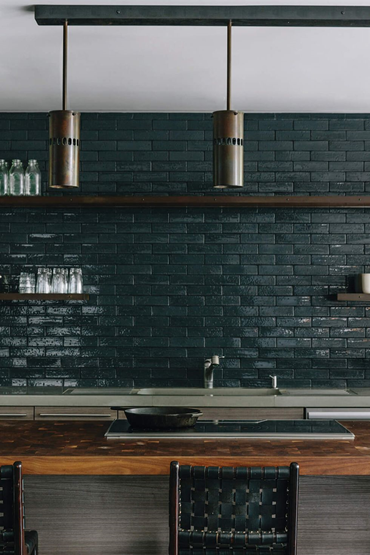
If you find white tiles too plain and colorful ones too vibrant, consider a darker theme. An urban, moody kitchen design can be especially striking—even in Malaysia—where a industrial edge is becoming increasingly popular.
5– Embracing a Dark-Themed Look
Inspired by the ambiance of chic cafes, a kitchen outfitted with black glossy tiles can strike the perfect balance between retro and futuristic. If black feels too heavy, consider white tiles with dark grout for a balanced, modern twist.
6– Mixing Black and White Elements
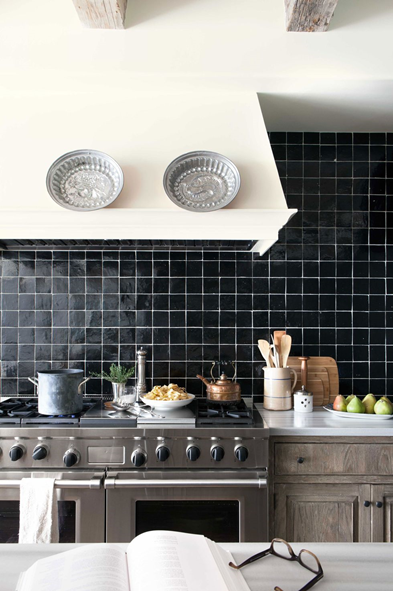
Blend black subway tiles with light-colored walls and cabinetry to create a balanced look that offers a hint of retro charm while keeping the space bright and airy.
7– Applying a Herringbone Pattern
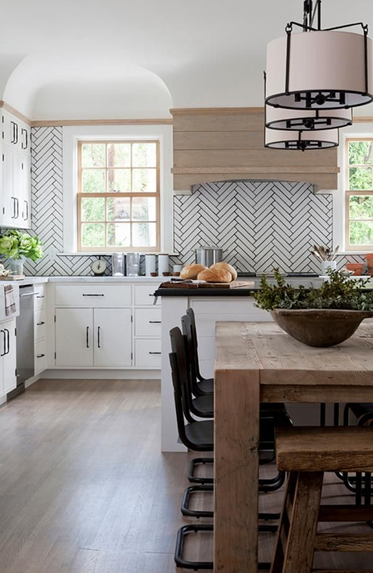
A herringbone design can serve as an eye-catching focal point. However, be cautious—too many feature walls in one space can create visual clutter. Ensure that your furniture and fixtures complement rather than compete with the pattern.
8– Opting for a Clean, Minimal Design

When in doubt, you can’t go wrong with a clean and neat approach. Choose subway tiles that blend seamlessly with your wall and furniture colors to evoke a sense of spaciousness and a contemporary vibe.
Kitchen Design Mistakes to Avoid
When installing subway tiles, be mindful of common pitfalls:
- Matching your backsplash too closely with your countertop can result in a monotonous look. Aim to create a harmonious balance with your cabinets and walls.
- Overlooking your kitchen flooring is a frequent error—ensure your tile design complements your floor rather than competing with it.
- Selecting the wrong tile size can lead to awkward, odd-looking cuts that disrupt the design flow.
- Mixing different styles of subway tiles in one room often results in visual chaos. Stick to one style for a unified look.
- Uneven spacing or misaligned tiles can ruin the overall aesthetic. Use spacers during installation to achieve a polished, professional finish. If you’re not comfortable doing it yourself, consider hiring a professional.
How Much Do Subway Tiles Typically Cost?
Subway tiles are generally sold in bulk, with prices ranging from RM1.96 to RM3.80 per piece. Remember to account for area coverage and the type of tile material when budgeting for your project. It’s also wise to purchase a few extra pieces for any potential replacements down the road.
Will Subway Tiles Go Out of Style?
One of the greatest benefits of subway tiles is their enduring appeal. Their clean, timeless design has withstood the test of trends and remains a popular choice for homes of all sizes and budgets.
Plus, compared to textured or marble tiles, subway tiles are an affordable option for achieving a high-impact look in your kitchen.
Now that you have a comprehensive overview of subway tiles and a variety of design ideas, we invite you to share your thoughts on your upcoming kitchen makeover project. What pattern or color scheme speaks to you? Let us know in the comments below!

